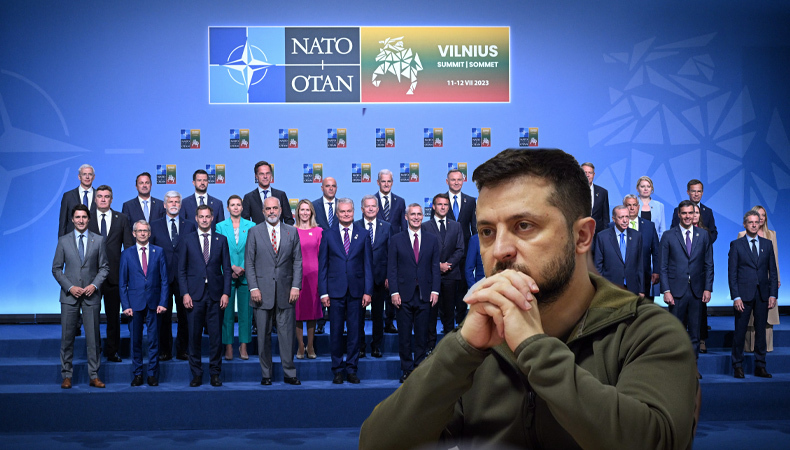G7 Ratifies Security Pact with Ukraine, Membership Timeline Delayed

The Group of Seven (G7) countries announced the approval of a comprehensive security agreement with Ukraine at the Wednesday NATO meeting. The arrangement includes sharing intelligence and providing defense equipment as well as training programs. President Volodymyr Zelensky underlined his dissatisfaction and rage at the lack of a concrete timetable for Ukraine’s membership in NATO, even if the G7 leaders refrained from offering one. The security agreement is viewed as an important step in enhancing Ukraine’s security and sending a clear message to Russian President Vladimir Putin.
Also Read – Tehran Set Up Russian-Israelis’ Abduction in Iraq to Secure Iranians’ Release
The G7 Security Pact with Ukraine
G7 leaders, including those from Canada, France, Germany, Italy, Japan, the United Kingdom, and the United States, affirmed their commitment to a comprehensive security agreement with Ukraine on the second day of the NATO military meeting in Vilnius. The security cooperation includes sharing of intelligence, training programs, and the provision of defense assets. The goal is to strengthen Ukraine’s defense capabilities and make sure it is not left open to the kind of aggression Russia has previously inflicted on the nation.
The long-term protection of the country is the goal of the official agreements being negotiated by Ukraine’s partners, UK Prime Minister Rishi Sunak stressed. More information on the arrangement is anticipated to be made public. The United Kingdom was instrumental in helping the G7 partners reach an agreement.
Zelensky’s Disappointment
NATO’s refusal to provide Ukraine a definite deadline for joining the alliance has angered President Volodymyr Zelensky. He decried the postponement as “absurd” and warned that the absence of a timetable might turn Ukraine’s future membership into a negotiating chip. Zelensky stressed the value of NATO’s assistance in ensuring Ukraine’s safety and gave a battle flag from Bakhmut, the site of a bloody battle that took place during Russia’s invasion of Ukraine.
Implications of the Delayed Membership Timeline
Despite a recent NATO statement stating that Ukraine might join the alliance “when allies agree, and conditions are met,” Ukrainian officials are disappointed that no timetable has been provided. Ukraine wants to join the alliance as soon as possible after the end of hostilities, despite accepting that it cannot do so while Russia and Ukraine are at war. According to President Zelensky, NATO membership would both give Ukraine the security it needs and strengthen the relationship.
Also Read – Putin’s Response to Wagner Mutiny Highlights Russia’s Relationship with Syria and Iran
Diplomats stressed that Ukraine now has a clear road to membership thanks to the G7 leaders, considerably speeding up the application process. They acknowledged Ukraine’s growing political and military integration with NATO troops and pledged to assist the country’s reforms in the democratic and security sectors going forward. Additionally, a new Nato-Ukraine Council was established, giving Ukraine the power to call alliance-wide meetings.
At the NATO summit, the G7 security treaty with Ukraine was ratified, a big step toward improving Ukraine’s defence capabilities. The G7 leaders have outlined a clear road to integration, even as they refrained from offering a timetable for Ukraine’s accession to NATO. The dissatisfaction of President Zelensky emphasises the pressing need for Ukraine to join NATO to guarantee its long-term security. Although the G7’s commitment to Ukraine’s security and its continuous support for democratic and security reforms raise worries about the membership timeframe, these actions represent a substantial advancement.




